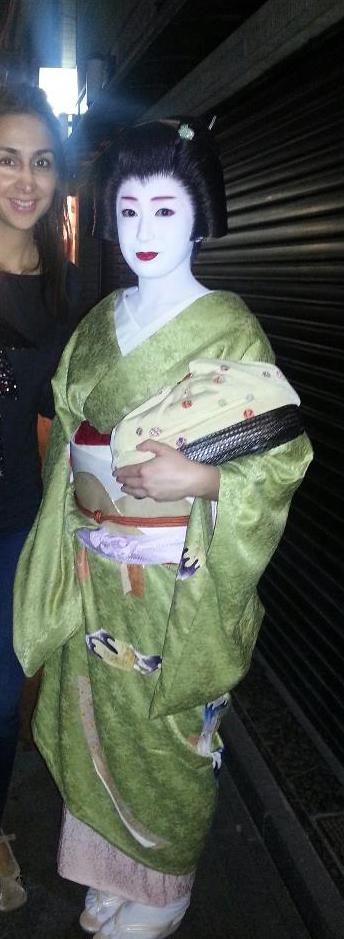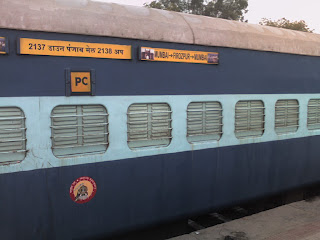Kyoto Diaries
24 OctWe are in the Shinkansen, the famous bullet train of Japan, on our way to Tokyo from Kyoto. I have longed to visit Japan, this gem of a country, known the world over for its culture, a country unrivalled in its love for tradition and preserving of the past even as it kept ahead of the rest of the world, ever since I can remember. One always wondered how this small island nation, had left its mark on the world, when it may well have made its peace with its scanty land mass and high seismic activity, and made that the reason to limit itself.
I was mystified even before I arrived here but four days, much sashimi, a few Geisha’s, a castle and many types of Sake later, I am more confounded by this remarkable nation that I ever expected to be.
The Kansai airport in Osaka, where our plane landed, is an engineering marvel made on reclaimed land in the middle of the sea. Kyoto is an hour away from Osaka and the first thing that struck me about the Japanese people is their courtesy as they queued up to board the train and gave every passenger a chance to ease their bags into the train, as they waited patiently to board.
Inside the train, the ticket checker bent over and greeted each passenger with a smile, as he moved around asking for tickets. One has seen courtesy elsewhere in the world, but nowhere has one seen such graciousness, effortless politeness and courtliness, as one sees in Japan. Even the lady porter who delivered our luggage to our room refused to take any tip from us and thanked us in a fashion that led one to believe that she was grateful at having been given an opportunity to serve us. I cannot speak for others, but the husband and I both feel that the Japanese make us want to be better people.
We walked around the Kiwaramachi area on our first day, marvelling at the beautifully packaged goods inside the tiny, inexpensive stores and the various variety of green tea confectionary at display. We spent out afternoon savouring street food like fried Octopus, roasted chestnuts and bubble soya milk. Even the vendors of these small shops were not lacking in grace and thanked us with much bowing and Arigatos, even when we did not end up buying their wares.
Owing to a shortage of space, the Japanese people live in doll houses made of wood, bamboo and rice paper. Everything that the people of this country use inside their homes and kitchens seems like a miniature version of what everyone else uses around the world. It must then be, that, it is living in such small, delicately built surroundings, which bring about indubitable grace to the daily existence of the Japanese.
Kyoto is the ancient capital of Japan and the city is dotted with shrines of different faiths all over. Some of these old shrines, belonging to the 12 and 14th century, are juxtaposed by modern structures, along the same neighborhoods, but then, there is no facade in Kyoto, that is too modern to coexist with its past.
On our first evening, as we made our way to an elaborate seven course meal inside a tiny, unassuming restaurant, we spotted Geishas glide past us in their elaborate kimonos and their high wooden sandals. Geishas are huge cultural icons of Japan and their diminishing numbers have only added to their mystique. They walked hurriedly, although in tiny, restricted steps, towards their evening engagements, bashful of the attention their appearance garnered from people, mostly tourists walking around those streets.
The unexpected Geisha sighting left us enchanted and whetted our appetite for more. One had heard that many people visited Kyoto and returned without having seen a real Geisha and one should consider themselves lucky if one had seen even a single Geisha in passing. The following evening, at 6pm, we waited outside a famous Geisha house from the 16th century with hordes of professional photographers and tourists. The crowd thronging outside the tiny lane, reminded me of fans waiting outside Amitabh Bachchan’s house, to catch one glimpse of their favourite super star. When we grew weary of waiting we decided to walk towards Ponto Che for dinner and on our way there we spotted two Geishas but by the time I could dig my camera out of my bag, they were gone, just like a flash of lightening.
Fine dining in Japan has been perfected to an art form and we got a taste of that on three consecutive nights as we were ushered inside, Zen-like restaurants, by Kimono clad ladies. Most of the Michelin starrer restaurants of Kyoto are discreetly tucked away inside tony residential lanes. You could walk down that street every day and not know that behind the tiny landscaped garden lies a ryokan or a fine dining restaurant. We were made to remove our shoes at the doorstop and led inside neat passages and taken inside a room with tatami mats and sunken in seating. The drill, if I may call it that, that followed, was nothing short of a recital, as our kimono clad hosts would seat us, one by one, and then go on to serve us portion after portion of a delectable Japanese meal, large enough to fill a sparrow’s stomach. The portion size of a normal Japanese meal is the same as the size of pickles that Indians use along with their main meals. But therein, lies the beauty, for one savours textures and subtle flavours, presented exquisitely, to engage all senses.
Who can imagine dining inside a restaurant that is 540 years old, and still going strong, what with it being the favourite noodle restaurant of Emperor Akihito? Who can imagine, the chief hostess of a restaurant, walking you till your taxi to see you off and waving at you from behind, as your car pulls away? Who can imagine tofu and sashimi so fresh, that it melts in your mouth? Two of the most remarkable restaurants we dined in were Ryozanpaku and Koikun Hoten, which have achieved culinary eminence, the world over.
By our second night in Kyoto, 8 other kindred and hungry souls like us, our friends from Mumbai joined us. Imagine eight loud Indians inside a serene Japanese house, being served by dainty, diminutive women in Kimonos and then, imagine the indeterminable damage, the presence of such a group would have rendered on their delicate senses.
Our friend Rohan, who is a chef and a gourmand, has forbidden me, from writing anything unsavoury about the Michelin meals we were served in some of these restaurants, and I shall have to keep my word. However, suffice to say that, I am not brave enough to enjoy raw quail egg yolk, tiny fish fried with roe in their stomachs, served with head and fins et al, in the name of fine dining.
I cannot write about Japan and not sing praises of their toilets. Self lifting lids, heated and at times musical seats (to keep the other sounds down), controlled deodorizers and automated water jets of varying speeds, the Japanese make toilet-going a truly sublime experience. In my opinion the Japanese commode should be made their national insignia, for it speaks volumes about these industrious people and how far they will go in the name of courtesy, politeness and hygiene.
Our Shinkasen is pulling into Tokyo. I shall write more soon. Until then, Arigato Gozaimas.
A journey aboard a Mumbai bound Punjab Mail (train) from Singapore
3 OctI have just returned from Singapore by Punjab Mail. It was a Mumbai bound Indigo flight that I had checked into with my brood at Changi, but after security checks and ambling around the duty-free, I found myself aboard a flight that closely resembled the Punjab Mail, in as far as the morphological profile of its passengers was concerned.
This was my first flight on the all-economy Indigo carrier between Bombay and Singapore. It was a last-minute trip and both our kids had taken leave of absence from school. We were left with no other choice, but to arrive in Mumbai on Indigo airlines, to be able to get the kids to bed in time for school the following day. Don’t get me wrong, I am all for democracy, but not on international flights, if I can help it. In other worlds, I like the class differentiation. In fact, I prefer it.
As the flight gained altitude and it was deemed safe for passengers to undo their seat belts, an entourage of bearded Punjabi women got up from their respective seats in unison, like a flash mob. Soon this mob decided to disband and smaller groups of these Punjabi Sikh women, decided to assign themselves along different sections of the aisle all the way upto the galley.
They stood there, in their salwaar kameezes, and chatted with each other, like long-lost sisters, united after partition. Some of the elderly women in the group indeed looked like they had witnessed India’s partition in its full form. One could not help but admire their spirit, as one found out, that they were all set out on a religious pilgrimage to the important Sikh Gurudwaras in India.
The younger women in the group fussed over the elderly ones by constantly leaning over them and loudly repeating instructions to the nature of “Tussi hun toilet jaa sakdey ney” (Now you can go to the toilet). Or “Tussi aithey signature kar do.” (Please sign here). Or “Beejee, tussi sau jao hunne” (Please go to sleep grandma).
This sorority of Punjabi sisters, who were mostly in their 60s, chattered endlessly across the aisles, sometimes even knocking off unsuspecting passengers seated alongside, with the swing of their ample bottoms as they moved about. Exaggerated as it may sound, I got knocked over a few times myself, if not by the cushy tush then by the fleshy albeit pokey elbow. But so obliged was I when I realized that the septum in my nose had not been dislodged, that I even forgot to take offence and smiled gratefully through smarting eyes at their abundant derrières.
At one point, as methi aloo and paranthas were being passed around, I even began to daydream that I was on a picnic by the Beas or Sutlej river. In fact, I half expected Gurdas Maan to show up on the flight, perhaps from the cockpit, and break into a Punjabi song any minute.
The husband, on the other hand, wasn’t as cheerful about their presence as one of the aunty jees lost their balance and fell over him on the tarmac and he was visibly annoyed when, minutes later, another aunty jee’s trolley rammed into his calves from behind, as he waited by the luggage belt for our bags to arrive.
As for me? I am Punjabi by nature and by birth and to me, this was the best kind of ’live’ in-flight entertainment that I have witnessed in my life, even though it was more on the lines of Doordarshan programming than satellite. But in the absence of any television on board, who am I to complain?



